Why a Sapsucker may be a Hummingbird’s Best Friend
Sapsuckers feed on tree sap, and are expert at getting to the nutritious phloem sap and keeping it from congealing. Bats and other mammals also like this free-flowing sap, as do warblers and nuthatches, but hummingbirds are especially thankful to sapsuckers.
Table of Contents
Sapsuckers
Sapsuckers are in the woodpecker family Picidae, which, in North America, includes 5 genera and 22 species. Four of these species are sapsuckers, all in the genus Sphyrapicus. All four are found in North America, some year-round, and all during summer breeding. Williamson’s Sapsucker (Sphyrapicus thyroideus) is the largest one, at nine inches, and is found primarily in the mountain states, from Colorado west.
The Red-breasted Sapsucker (Sphyrapicus ruber) is a west coast bird, from Baja California to southeast Alaska. The Red-naped Sapsucker (Sphyrapicus nuchalis) breeds from British Columbia south to Colorado, and winters in the southwest U.S. and Mexico. The Yellow-bellied Sapsucker (Sphyrapicus varius) is the most widespread of the four, breeding across Canada and eastern U.S., and wintering in the southeast U.S., Mexico and Central America.
Like other woodpeckers, sapsuckers have chisel-like bills and stiff tails that help prop them upright while they cling to tree trunks. More than most other woodpeckers, sapsuckers are secretive and inconspicuous, and their drumming is uneven and erratic. With the lone exception of the female Williamson’s, all sapsuckers have a diagnostic white ‘shoulder patch’. Something else that differentiates sapsuckers from other woodpeckers is their affinity for tree sap and their specialized skill in obtaining it.
How (and why) do Sapsuckers ‘Suck’ Sap?
‘Saplappers’ would be a more appropriate name for these woodpeckers than sapsuckers, since they feed on sap by lapping and licking, not sucking. Their extensible tongue is long, sticky and barbed, like other woodpeckers, allowing them to penetrate and retrieve insects from crevices. In the case of sapsuckers, their tongue also is used to feed on nutrient and sugar-rich phloem tree sap.
Phloem is plant tissue that transports nutrients from the photosynthetic part of the plant (leaves) to the plant’s roots. The vascular phloem system is found in the tree’s bark, allowing sapsuckers to reach it easily by drilling small shallow holes with their bill. Sapsuckers drill horizontal rows of small, square-like holes, and add new rows over time, producing an unmistakable pattern on a tree trunk or limb.
Normally, the phloem exposed by a wound to the tree’s bark would quickly congeal and seal, but the holes sapsuckers drill (wells) allow the rich sap to remain fluid. Most likely, this results from an anticoagulant deposited by the sapsucker. The liquid sap attracts insects, as well, adding protein to the sapsucker wells. Mammals such as bats and porcupines are drawn to these sapsucker wells, as are other woodpeckers, warblers, Verdins and hummingbirds.
Sapsucker Wells and Hummingbirds
More than other birds or mammals, hummingbirds are particularly appreciative of sapsucker wells. Hummingbirds rely on nectar for as much as 90 percent of their diet, and sapsucker wells are especially important to migratory hummingbirds that nest and breed in the north, often arriving before adequate nectar-producing flowers have bloomed. In addition, insects drawn to the flowing sap help satisfy the protein needs of hummingbirds.
Even in southern U.S. states, sapsucker wells created by migrating sapsuckers in the winter provide a food source for hummingbirds that winter over or move south in the winter. Wells created by Red-naped Sapsuckers in the Colorado mountains during summer, when the sapsuckers are breeding, feed nesting Broad-tailed Hummingbirds and southbound migratory Rufous and Calliope Hummingbirds. When these sapsuckers move to southeastern Arizona in the winter, their wells are used by Costa’s and Anna’s Hummingbirds (as well as Verdins).
Birders looking for hummingbirds when sapsuckers are present should search as diligently for rows of sapsucker holes as for hummingbirds. Finding free-flowing (sticky) sapsucker wells often is an easy way to find hummingbirds. Hummingbirds will feed on these wells as aggressively as they do on home feeders, rewarding patient birders with good opportunities to observe and photograph them.
Is the Sapsucker a Hummingbird’s Best Friend?
Bird lovers who set out sugar-water feeders play an important role in augmenting hummingbirds’ natural diet. Inadvertently, sapsuckers perform a similar service with their phloem sap-tapping wells. Since the sapsuckers’ effort may allow hummingbirds to survive in northern breeding ranges far from human habitation, they might well be considered a hummingbird’s best friend.

